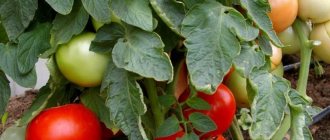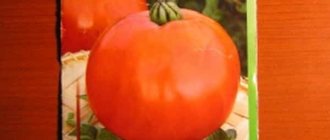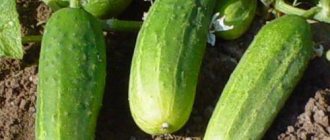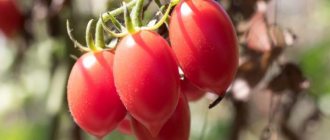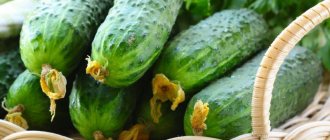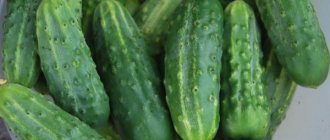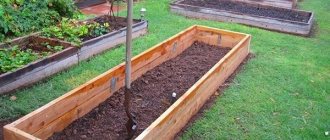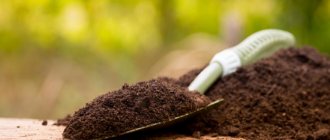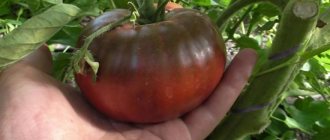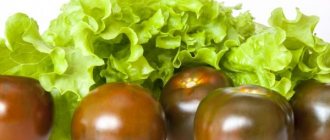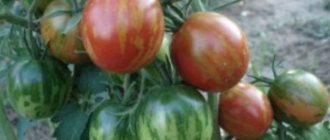It is worth starting the description of the Nezhinsky cucumber variety with the fact that it is one of the most popular products of domestic selection. There are many regional hybrids based on this ancient variety - for example, New Nezhinsky f1. The timing of its ripening varies depending on the climatic zone of cultivation - from mid-ripening in the Southern region (45-50 days) to late in the North-West (55-65 days). Cucumber is bee-pollinated, so it prefers open ground.
Description of Nezhinsky cucumbers
Nezhinsky cucumber is an unpretentious variety that is resistant to sudden frosts and short droughts. Resistance to temperature changes allows it to be cultivated in the most severe climatic regions. Its taste has been tested for three centuries - the vegetable has a delicate, sweetish taste and a pronounced aroma. Cucumber is versatile: it can be used in salads, appetizers, and in various canned foods. Nezhinsky is especially good when marinated.
The yield of the product is low in comparison with parthenocarpic hybrids - only 4 kg/m²; for New Nezhinsky f1 it is slightly higher - about 5 kg/m².
The bush of this variety is quite tall - up to 2 m - and unlimited in growth, so it will have to be pinched. The plant, judging by the description, branches and weaves heavily, and a lot of green mass always forms on it. The leaves themselves are quite large, very ruffled, have a light green color, the flowers are small, orange-yellow. The cucumber is of small length (up to 12 cm) and, at the same time, of average volume - 4.5 cm. Each green cucumber weighs about 100-110 g. The color of Nezhinsky’s skin is rich green, slightly lighter at the bottom, with whitish stripes.
Characteristic
The cucumber variety “Nezhinsky” is bee-pollinated, mid-early. From germination to fruiting it takes from 50 to 60 days. The vines of the plant are long and can exceed 2 meters. The leaves of the variety are green and medium-sized. Bunch type ovaries. The yield of the variety is high, can reach 2 kg per square meter.
The fruits of the Nezhinsky cucumber variety have excellent taste, crispy, with a characteristic cucumber aroma. The shape of the fruit is elongated, ovoid. The skin is coarsely tuberculate, dense. The spikes are black. The weight of the fetus does not exceed 100 grams.
Cultivation of the variety - open ground, greenhouse.
Pros and cons of the variety
The cucumber in question boasts excellent resistance to weather changes and common diseases. Nezhinsky has an excellent taste and is excellent for processing and preservation. On the other hand, the bushes of the variety, judging by the description, will require a lot of effort to form, are not very fertile and need pollination by insects.
pros
Nezhinsky has many undeniable advantages that allow him to enjoy constant popularity among gardeners. The most important advantages of this variety:
- frost resistance - the crop will not die due to slight night frosts and temperature changes;
- undemanding - cucumber does not need a large amount of fertilizers and special agricultural technology;
- excellent taste - Nezhinsky has an incomparable aroma and a delicate, fresh, sweetish taste;
- good immunity - the vegetable has, according to the description, excellent resistance to cladosporiosis, mosaic and bacteriosis.
This cucumber has approximately equal numbers of female and male inflorescences, which makes it possible to prepare seeds for the next season - even if we are talking about Nezhinsky f1.
Minuses
The vegetable in question is not without several annoying shortcomings that do not allow it to occupy the niche of the best of the domestic varieties. Its most significant disadvantages:
- low fertility - no more than 4.5 kg of Nezhinsky greens are collected from 1 m²;
- difficulties in forming a bush - it should not grow upward, like varieties such as Spino f1, but use side shoots;
- vulnerability to downy mildew - the cucumber will have to be treated with antibacterial agents in time;
- cucumber attracts various insect pests - special attention must be paid to protecting the crop from parasites.
In addition, cucumber needs pollination by honey plants, which makes its cultivation in protected soil very difficult.
Landing Features
This variety was created exclusively for open beds. The primer under the film is also quite suitable for Nezhinsky. Growing such a cucumber in a greenhouse is very difficult - this option remains only for extreme cases. Various types of soil are suitable for vegetables - from classic chernozem and sandy loam soil to loamy soils that are difficult for vegetable growing.
Landing dates
As a rule, Nezhinsky is planted quite late, when spring night frosts have passed. In the central region, the variety can be planted as seedlings in early May, and germinated sprouts can be planted in early June.
In the southern region, cucumbers are planted a little earlier - in mid-April and May, respectively. A prerequisite is that the soil must be warm and the air must warm up to 18°-20°.
Site preparation
The variety is best cultivated in well-lit, flat areas where moisture does not accumulate. In the fall, the soil for cucumbers is cleaned, loosened and fertilized with organic matter. Immediately before planting Nezhinsky (a week), the soil, as described, is dug up with a shovel, treated with a solution of potassium permanganate and holes are cut for cucumbers, after which humus or peat is placed in them. If necessary, the soil is pre-warmed.
Planting seeds
Nezhinsky seeds are introduced only into well-warmed soil - this is very important for germination. Before planting, the seed material of the variety is soaked in damp gauze and treated with a fungicide. In the case of the f1 hybrid, this can be avoided. Seeds are planted at a depth of 1-1.5 cm.
Cucumber grows best in raised beds where support for the stem is provided. After planting, the area is watered abundantly and covered with a light film.
Planting seedlings
Nezhinsky seedlings are germinated in separate containers, 2 seeds per pot. Cucumber requires bright lighting, so it is better to use lamps to complement natural light. The room temperature should be kept between 20°-22°.
The plantings of the variety are watered every other day, and liquid fertilizing is applied every week. You can transfer seedlings into the ground, according to the description, 25-28 days after planting the seeds of this variety.
Planting scheme
Seedlings are planted on a warm, dry day. The Nezhinsky plantings are deepened by 3.5 cm. The recommended distance between the bushes of the variety is 30-35 cm. The ideal row spacing for Nezhinsky is 55-60 cm. During the growth process, the beds are thinned out from time to time - it is better to remove weak plants. A cucumber, based on the description, needs good lighting and access to oxygen, which is impossible when planted densely.
Soil requirements
The soil for growing the Nezhinsky variety must be prepared in the fall. During this period, manure should be added - it must be fresh. Manure can be applied to loamy soil in the year of planting, but no later than a month in advance.
It is also important to choose the right place for planting. Melon crops are undesirable as a precursor to cucumbers. It is better to plant them in areas after potatoes, tomatoes, and cabbage.
The soil must be light enough, otherwise the root system of the crop will develop poorly. Humus must be added to heavy clay soil. Before planting, be sure to dig up the area and get rid of weeds. Mineral fertilizers are applied during digging. This is potassium nitrate, superphosphate - application rates are indicated on the packaging.
Care
Nezhinsky will not require expensive fertilizing and complex agrotechnical work from the vegetable grower. All a cucumber wants is a lot of sun and water, timely weeding and loosening. Don’t forget about protecting the variety’s plantings from insect pests.
Watering
In normal, not too hot weather, the plantings of the variety are watered once every 2 days. In extreme heat, the beds are watered every day. For Nezhinsky, only water well heated in the sun is suitable - cold watering can provoke rot. Water the cucumber in the evening, after sunset, using the drip method, avoiding burns to the foliage. After each watering, the soil around the plantings of the variety is loosened.
Garter and bush formation
This is the most difficult part of cultivating Nezhinsky. The cucumber branches actively, but quite late. The central stem is pinched at 5-6 leaves. The side branches of the first level are allowed to grow to 4 leaves, after which they are also pinched. Usually, fewer side shoots are formed on New Nezhinsky f1 - they are pinched out on the 5th leaf. Finally, all subsequent shoots of the variety are well fixed and placed so that they receive enough light and oxygen.
Feeding
The famous taste of the Nezhinskys was formed at a time when there were no other fertilizers except organic matter, so you should not abuse fertilizers.
Complex fertilizing based on manure or compost gives good results. Fertilize the cucumber every 7-10 days, alternating the root method and spraying. Potassium fertilizing of the variety is used during the period of seedling growth, the beginning of flowering and fruiting.
Hilling
Sprinkling with soil is especially important for this variety, whose roots lie quite high. The entire root system of Nezhinsky must be covered with soil so that the delicate roots do not dry out and are not damaged. Hill up the cucumber after each watering, sprinkling the bushes with soil up to 1/3 of their height. Regular hilling, combined with shallow loosening, protects the cucumber from winds, drought and insect pests.
Agricultural technology, growing rules
The variety is universal, but it is best grown in open soil. There simply won’t be enough space for the Nezhin cucumber in the greenhouse. In addition, they need pollination by bees, and in greenhouses this is not always possible. All this will negatively affect productivity.
But growing on ridges with trellis supports has a positive effect on productivity.
This will prevent the long vines of the cucumber from spreading on the ground, and will increase the yield almost 10 times. To create such ridges, a trench 30 centimeters deep is dug. We put 15 centimeters of humus or peat into it. Next, we form ridges from the soil.
Cultivation, land
The Nezhin cucumber accepts any soil, but it is important for it to have the right predecessors. These include, for example, legumes or any nightshade
But the bed should be in the sun.
These cucumbers can be sown immediately, without growing seedlings. The seeds themselves must be soaked beforehand. But what must be required is well-warmed soil. It is best to plant them towards the middle of the last month of spring. The seeds are buried about 3 cm. The distance between holes should be about 0.3 m, between rows - half a meter.
When the first shoots with real leaf blades appear, it is recommended to thin out the cucumbers and leave only the strongest and strongest. If seedlings are grown, then they need to be done about a month before transferring Nizhyn cucumbers to open ground.
It is worth remembering that most of them have male flowers. For pollination to be effective, the number of flowers must be equalized. To do this, cucumbers must be pinched.
The variety is not too picky, but it definitely needs moist soil. That is why they should be watered every other day, and if the weather is too hot, then every day. But the ground should not be wet. Watering is best done in the evening using a drip irrigation system.
If this is not possible, simply water the cucumbers at the root so that a minimum amount of water gets on the leaves. After watering, be sure to loosen the soil and hill up the cucumbers. If the soil is mulched, there is no need to hill up.
Trellis are best installed when the first shoots appear
When tying up the vines, it is important to avoid touching the leaves to the ground. This will prevent the development of mycoses
Another important point of care is feeding. Nezhinskys need both organic and mineral fertilizers. In addition, they are equally grateful to both root and foliar feeding. So, try to alternate them.
When the ovary is formed and the cucumbers ripen, you can use the following mixture for feeding:
- 10 liters of water;
- Urea – 70 g;
- Potassium permanganate – 4 g;
- Copper sulfate – 3 g;
- Boron – 3 g.
Fertilizer is used a couple of times per season. Between feedings, you can also use folk remedies, among which the best ones are:
- Weed infusion (part herb to 5 parts water);
- Infusion of yeast or bread;
- Ash (a glass per bucket of water);
- Bird droppings (part droppings to 15 parts water);
- Manure (part to 10 parts water).
Care also includes harvesting every other day.
Anya (Electrostal)
“The soil in our region is not the best, and the air is better. However, Nizhyn cucumbers have never let me down - excellent harvests are a regular occurrence here, and the cucumbers are always tasty and crispy.”
Nizhyn cucumbers are an old variety, but always relevant: they are invariably tasty and undemanding. However, there are several rules for growing them:
- They grow best in open ground;
- To increase productivity, you need to use trellis supports;
- They need to be watered every other day.
Nezhinskie are good because they are tolerant of droughts, diseases, and frosts.
Diseases and parasites
Nezhinsky is quite resistant to the most severe diseases that a cucumber can become infected with. However, the variety often suffers from attacks by insect pests - especially the Siberian hybrid Nezhinsky f1. He will need frequent checks for parasite larvae and preventative treatments.
Downy mildew
Downy mildew affects cucumbers during the flowering period, in early summer. Most often, downy mildew appears on plantings under film, or in greenhouse conditions. The disease manifests itself as small yellowish marks running along the veins on the leaves of the variety, which become wet and rot.
In the initial stages of the disease, the virus is fought with a sulfur solution, and in case of more serious damage, with the fungicides Fitosporin-M and Gamair. Infected bushes are removed from the beds and burned. For prevention, cucumbers are planted in place of pumpkins or field grasses and carefully treated to remove weeds.
Aphid
The pest settles in Nezhinsky beds with excessive moisture and insufficiently clean weeding. You can notice the parasite on the back of the leaf, as well as by sticky, whitish “traces” on the plant of the variety.
To prevent the spread of aphids in the fall, the area is treated with smoke from sulfur bombs. If the cucumber has already been affected, it is recommended to use a solution of tobacco and soap, or red pepper. In the most severe cases, according to the description, it is permissible to use such products as Fitoverm and Strela on the variety.
Medvedka
This large insect eats cucumbers at the seedling stage, so preventive measures against it are of particular importance. Immediately after planting the variety, the ground around is mulched with branches, which are watered with kerosene. Marigolds are planted between rows - pests cannot stand their smell. The soil for the cucumber is carefully examined, and the discovered mole cricket passages are filled with vegetable oil. If the insect has already settled on Nezhinsky’s plantings, they are treated with the drugs Phenaxin, Grizzly, Bankol, Medvetox, etc.
Harvesting and storage
The first greens of the variety begin to ripen in the southern regions in the first half of July, in colder zones - in the middle of this month. By this time, according to the description, Nezhinsky’s plantings are no longer fertilized so that the harvest does not contain traces of biologically active fertilizers. The cucumber is cut with pruning shears as soon as its length reaches 11-12 cm, otherwise it will overgrow and acquire a bitter taste.
The harvest of the variety is stored well - it can last 7-10 days without loss of taste, density, juice and characteristic aroma. Place the cucumber for storage on the top shelf of the refrigerator, loosely packed in a plastic bag - no more than 3-4 greens in one bag. Nezhinsky tolerates transportation well - its skin is quite dense and is not damaged even when shaking on the road.
